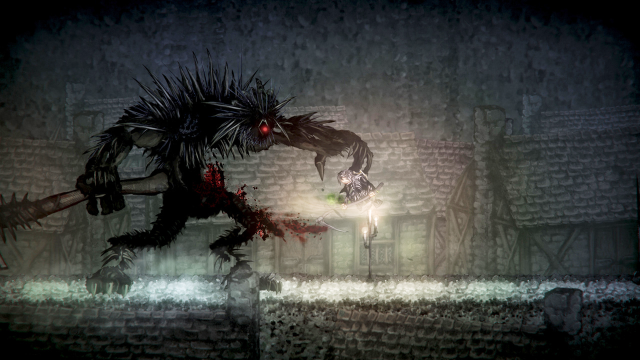I’m flying across the country tomorrow and need help keeping calm while I travel. Luckily, the Nintendo Switch has added dozens of exploration-focused titles to distract me, including the 2D Soulslike Salt and Sanctuary. Like Hollow Knight, it’s a game that fares much better on a portable console.
Salt and Sanctuary originally released in 2016 and, along with games such as Lords of the Fallen, helped solidify Soulslike games as a viable subgenre.
These games pull and iterate on certain design priorities from the Dark Souls series: A collectable resource used for levelling that is lost upon death, a semi-open world structure punctuated by set piece boss battles. Modern games such as Nioh transplant the genre into a different setting and add new combat mechanics.
Salt and Sanctuary’s approach is more direct; it was one of the first successful 2D takes on the genre. I’ve always had a fondness for the game, but getting to play it on the Nintendo Switch has been particularly enjoyable.
In Salt and Sanctuary, you play as an adventurer shipwrecked on dangerous shores, searching for a lost princess. She was meant to marry a neighbouring nation’s king to avoid a war. As you explore the island, which is packed full of bandits and beasts, you fight an assortment of boss creatures, and it becomes clear that something is very wrong.
The initially political setup falls to the wayside as the island begins to warp and twist. The game world is a patchwork of different nations and dangerous locations, a sort of eldritch geography embodying everything hostile. Fog-laden moors with patrolling knights shift into burglar-filled hamlets presided over by demonic jesters.
If there’s one thing that Salt and Sanctuary nails, it’s the growing sense that there is something profoundly wrong here. It gives the exploration a much more anxious feeling than Dark Souls.
When I first played Salt and Sanctuary at release, I had a fun time exploring but found it hard to sit down for marathon sessions. On the Nintendo Switch, that isn’t as much of a problem. Playing in the portable mode has some frustrations — I’ll always find the Joycon buttons a little too small — but there’s something about being able to stuff your console into your purse that makes it more acceptable to play a game in small increments.
I’ve enjoyed the Switch version much more as a result, opting to play one boss at a time. That’s a good thing, since Salt and Sanctuary’s combat can be a hit or miss affair. The 2D plane makes rolling through attacks more important than ever, but it’s easy to get cornered in small boss arenas.
Salt and Sanctuary on Switch also releases into a much more interesting ecosystem of games. The Nintendo Switch is slowly turning into the perfect place to get your fix on interesting exploration games. Dandara’s mixture of spatial fuckery and Metroid-esque powers ups is a blast, and Hollow Knight’s moody world is perfect for getting lost. Salt and Sanctuary is more intense and bloody, and it rounds out the console’s catalogue nicely.
My arse is going to be stuck in a flying metal tube all of tomorrow, but I’ll still be able to fight all sort of monsters thanks to these games.

Comments